Orthodontic issues in children and teenagers are not just about esthetics; they are about ensuring proper oral health and function. At Burke & Redford Orthodontists, led by Dr. Ryan Redford and Dr. Michael Burke, young patients receive comprehensive care tailored to their unique needs. When a child or teenager has oral conditions like a crossbite or impacted teeth, our top orthodontists are adept at treating both.
Understanding Crossbite
Crossbite is a prevalent orthodontic issue, particularly among children and teenagers. It is identified by a misalignment where the upper teeth bite inwardly of the lower teeth.
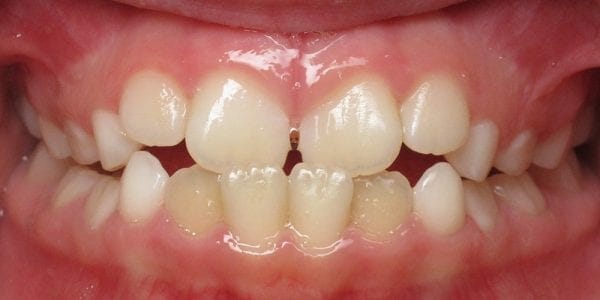
Here is a detailed breakdown for easier understanding:
Types of Crossbites
– Anterior Crossbites: This means the upper front teeth set behind the lower front teeth when biting down. This is also referred to as an underbite.
– Posterior Crossbite: This is related to the back teeth – when the upper arch is too narrow relative to the lower arch. This often results in a shifting of the lower jaw to one side when biting down.
– Single Tooth Crossbite: When only one upper tooth is misaligned and bites inside its corresponding lower tooth.
Causes of Crossbite in Children and Teenagers
– Genetic Factors: A family history of crossbite can increase the likelihood of its occurrence, especially with anterior crossbites.
– Delayed Loss of Baby Teeth: Retained primary teeth can prevent the proper positioning of permanent teeth, leading to a crossbite.
– Abnormal Jaw Growth: Disproportionate growth of the jawbones, either the upper or lower jaw, can result in a crossbite.
– Poor Oral Habits: Prolonged thumb sucking or pacifier use beyond the typical age can influence jaw development, potentially leading to a crossbite.
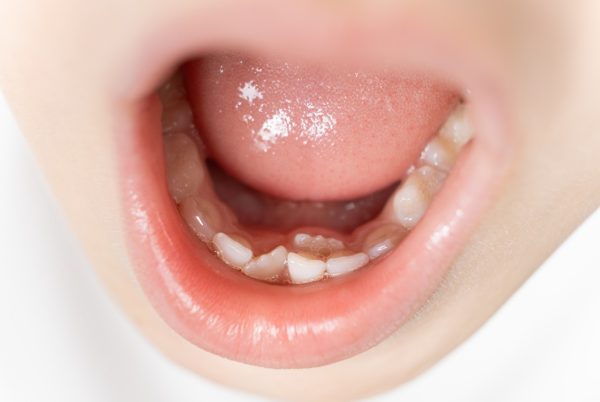
Signs of Crossbite
– Difficulty Chewing: Misalignment may cause a “functional shift” (shifting of the jaw to one side when biting), making it hard to chew food properly.
– Wear and Tear of Teeth: Abnormal alignment can lead to uneven wear on certain teeth.
– Asymmetrical Jaw Growth: In severe cases, a crossbite can contribute to the jaw growing asymmetrically.
– Speech Difficulties: Some children with crossbites might develop speech issues.
Understanding the nature and causes of a crossbite is essential for early diagnosis and treatment. If you notice any of these signs in your child, it is advisable to consult our orthodontists for a thorough evaluation. Early orthodontic intervention can prevent more complex dental issues in the future and pave the way for a healthier smile.
Impacted Teeth in Pediatric Orthodontics
Impacted teeth are a common concern in pediatric orthodontics. Impaction refers to teeth that have failed to emerge through the gums or have only partially erupted.
Understanding Impacted Teeth
– Definition: Impacted teeth refer to those teeth that haven’t emerged correctly into the dental arch during the anticipated time frame of development.
– Commonly Impacted Teeth: Wisdom teeth (third molars) and canines are the most frequently impacted teeth in younger patients.
Causes and Risk Factors
– Lack of Space: One of the primary causes for impaction is insufficient space in the jaw or dental arch for the tooth to emerge.
– Ectopic tooth position: Sometimes, a tooth may develop in a position or angle that impedes its proper eruption.
– Overlying Gum or Bone: A layer of gum or bone may cover the tooth, preventing its emergence.
– Genetic Factors: The presence of impacted teeth in family history can heighten the chances of children experiencing similar dental problems.
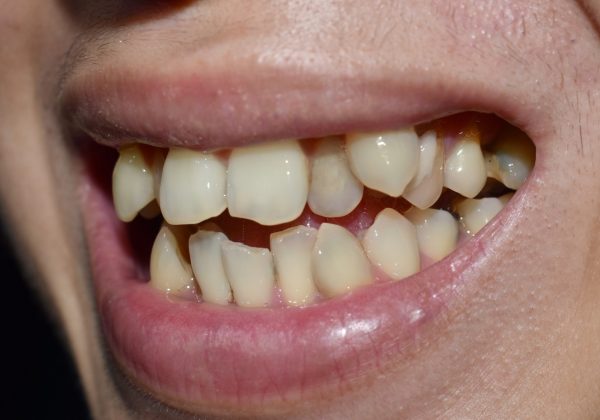
Signs and Complications of Impacted Teeth
– Visible Gap: An absence of a tooth where one should have erupted.
– Pain and Swelling: Discomfort or swelling in the gums near the site of the impacted tooth. In most cases, however, there is no pain or discomfort associated with impacted teeth. X-rays are often the only way to diagnose an impacted tooth.
– Resorption of Nearby Teeth: Impacted teeth can damage the roots of adjacent permanent teeth if not treated in a timely manner.
– Cyst Formation: Cysts can develop around the unerupted tooth, potentially damaging the jawbone and adjacent teeth.
– Crowding and Misalignment: Impacted teeth can push against adjacent teeth, leading to teeth crowding or misalignment.
– Gum Disease and Decay: Difficulties in cleaning can lead to a higher risk of gum disease and decay in the surrounding teeth.
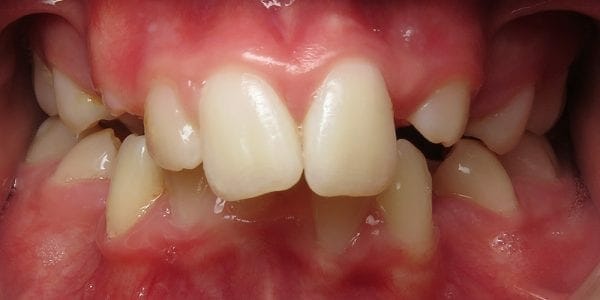
Importance of Early Detection in Managing Impacted Teeth
Early detection of impacted teeth in children and teenagers is crucial in pediatric orthodontics. It plays a significant role in preventing complications and ensuring effective treatment.
Here is a more detailed look at why early detection is so important:
Preventive Measures
– Guided Eruption: Early identification allows Dr. Redford to implement strategies that can guide the eruption of teeth, especially canines, into their correct positions.
– Space Management: In cases where space is an issue, early intervention might involve space maintainers or other appliances to ensure there is enough room for the impacted teeth to emerge.
– Monitoring Growth and Development: Regular check-ups enable orthodontists to monitor the growth and development of a child’s teeth and jaws, allowing them to anticipate and address potential impaction issues.
Timely Treatment
– Minimizing Complications: Addressing impacted teeth early can prevent complications like root resorption of adjacent teeth, cyst formation, misalignment of other teeth, and can decrease the chances of needing to surgically recover the impacted teeth.
– Optimal Timing with Growth Phases: Treatment timed with a child’s natural growth phases can be more effective. For example, certain orthodontic interventions are more successful during periods of dental/jaw development.
– Improved Orthodontic Outcomes: Early treatment of impacted teeth often leads to better orthodontic outcomes and reduces the need for more invasive treatments.
Comprehensive Treatment Planning
– Customized Approaches: Early detection allows orthodontists to create a more comprehensive and customized treatment plan, considering the individual needs and growth patterns of each child.
– Integration with Overall Dental Health: Addressing impacted teeth early can be part of a broader strategy to maintain or improve overall dental health, including bite alignment and jaw development.
Emotional and Psychological Benefits
– Boosting Confidence: Early resolution of dental issues like impacted teeth can boost a child’s confidence and self-esteem, especially during the formative tween and teen years.
– Reducing Anxiety: Knowing that dental issues are being addressed early can reduce anxiety for both children and parents, making the entire orthodontic journey smoother.
The importance of early detection in managing impacted teeth lies in its ability to prevent more complex dental issues, align treatment with natural growth patterns for better outcomes, and ensure a comprehensive approach to a child’s oral health. It also has significant emotional and psychological benefits, contributing to the overall well-being of the young patient. Regular dental check-ups and early consultation with an orthodontist are key steps in this proactive approach.

Example Orthodontic Case Studies
Let us look at specific orthodontic conditions a child could experience along with the type of treatment Dr. Redford and Dr. Burke would provide.
9-Year-Old with a Posterior Crossbite
Background and Diagnosis:
– A 9-year-old presents with indications of a posterior crossbite, marked by the positioning of the upper back teeth inside of the lower back teeth.
– The patient feels awkward chewing and their lower jaw shifts to the side when biting, which are common symptoms associated with this type of misalignment.
Potential Causes:
– Genetic factors, such as jaw size inherited from parents.
– Delayed or abnormal loss of primary teeth during early childhood.
– Abnormal jaw development, potentially due to habits like prolonged thumb-sucking during early childhood.
Orthodontic Concerns:
– Misalignment can lead to uneven wear on the teeth.
– Difficulty in chewing can affect nutrition and overall oral health.
Treatment Options:
– Orthodontic intervention is advised. This most likely involves a palatal expander to widen the upper jaw so its width coordinates properly with the lower jaw.
– In some cases, using self-ligating braces or clear aligners to gently guide the teeth into the right positions may be a sufficient correction
– Regular monitoring and adjustments are essential to ensure the treatment is progressing effectively.
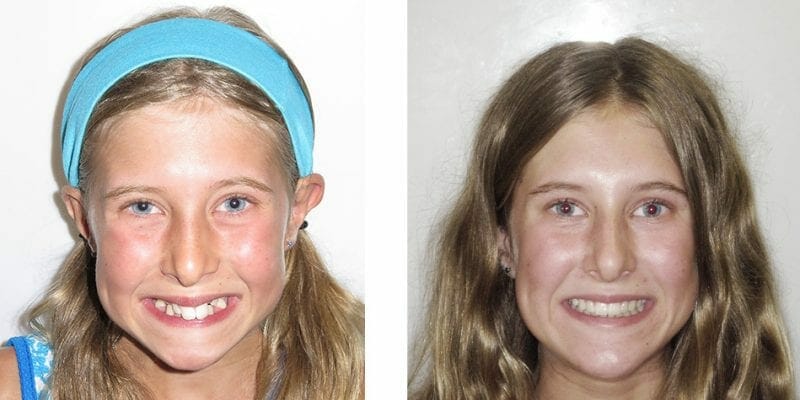
13-Year-Old with a Single Tooth Crossbite and Impacted Canine
Background and Diagnosis:
– A 13-year-old patient presents with a single tooth crossbite, where one upper tooth bites inside the corresponding lower tooth, and an impacted canine, which has not erupted properly.
– The impacted canine is a threat to the health of nearby permanent front tooth roots and prompt treatment is needed.
Potential Causes:
– Limited space in the dental arch for the canine to erupt, often due to early loss of primary teeth or genetic factors.
– The impacted canine could be obstructed by overlying bone or gum tissue.
– The single tooth crossbite might be a result of the impacted tooth exerting pressure on adjacent teeth.
Orthodontic Concerns:
– The impacted canine can lead to complications like cyst formation or resorption of adjacent teeth roots.
– Crowding can cause difficulties in maintaining oral hygiene, leading to an increased risk of cavities and gum disease.
– Crossbite can result in uneven wear of the tooth involved, and potentially affect the child’s bite and jaw alignment.
Treatment Options:
– Addressing the impacted canine may require a combination of surgical and orthodontic treatment. The tooth might need to be exposed surgically and then guided into place with braces.
– For the single tooth crossbite, self-ligating braces like Damon braces, ceramic or metal braces, or clear aligners can be used to move the tooth to its proper position.
– The treatment plan would be carefully tailored to consider the child’s age, growth, and specific dental needs, with regular check-ups and adjustments.
Treatment Approaches by Burke & Redford Orthodontists
Dr. Redford and Dr. Burke employ a detailed diagnostic process to identify the type and severity of the crossbite. Treatment may involve self-ligating braces, known for their efficiency and predictability. These braces, combined with other appliances like palatal expanders or headgear, can correct the crossbite by gradually moving teeth into their proper positions.
Addressing Impacted Teeth
For impacted teeth, the approach is two-fold. Surgical intervention may be necessary to expose the impacted tooth, followed by orthodontic treatment to guide it into the correct position. Burke & Redford Orthodontists work closely with oral surgeons to ensure a seamless and effective treatment process.
Benefits of Interceptive Orthodontics for Your Child
Early detection and intervention are paramount. Timely treatment can prevent more serious issues like jaw asymmetry or tooth root resorption. For our young patients, this not only means a healthier mouth but also a more confident smile.
Why You Should Request a Consultation with Our Doctors
Dr. Redford and Dr. Burke stand out as the top pediatric orthodontists with their extensive experience and thousands of happy patients over three decades in the Inland Empire. They are dedicated to creating individualized treatment plans that cater to the specific needs of each young patient, ensuring the best outcomes in both function and esthetics.
Addressing orthodontic issues like crossbites and impacted teeth is vital for the oral health of children and teenagers. At Burke & Redford Orthodontists, expert care and advanced treatment options are available now. We encourage families to take the first step towards a healthy, beautiful smile by requesting a consultation.
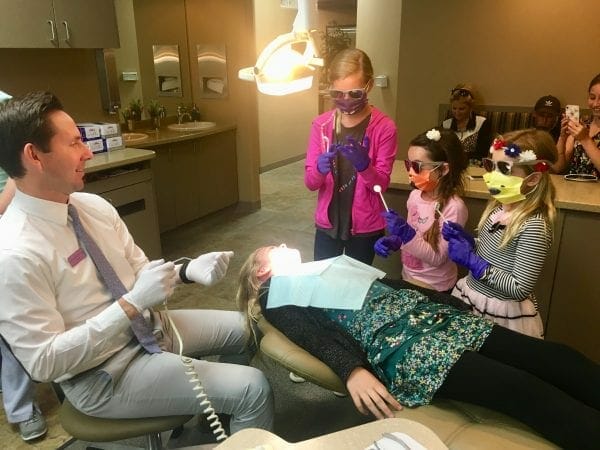
Here are our Orthodontist Office details for your convenience:
Address: 41238 Margarita Rd Ste 101, Temecula, CA 92591
Phone: (951) 699-8011
Office Hours: M-F 9:00 a.m. – 5:00 p.m.
Lake Elsinore Orthodontist Office
Address: 351 Railroad Canyon Rd Ste C, Lake Elsinore, CA 92532
Phone: (951) 699-8011
Office Hours: Open 1st and 3rd Wednesdays 1:00 p.m. – 5:00 p.m.